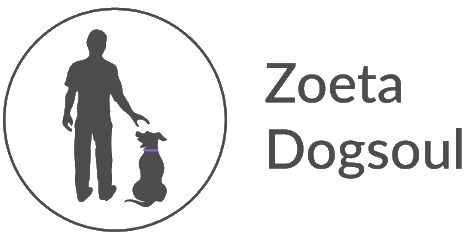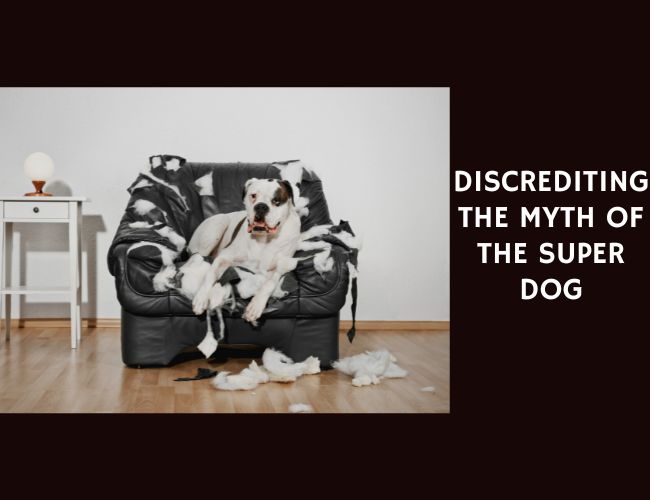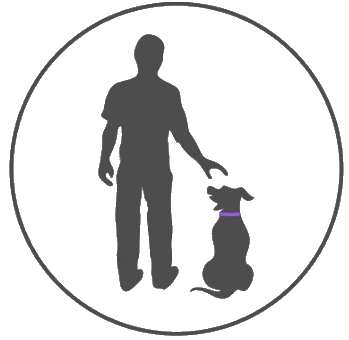We love our dogs, and why wouldn’t we? They’re loyal, affectionate, and always happy to see us. But as we navigate the highs and lows of dog ownership, it’s crucial to understand that our furry friends are not superheroes, despite what popular culture might lead us to believe. They are sentient beings with their own needs, instincts, and limitations.
The Mythical Super Dog
One common misconception held by many dog owners is that their pets can seamlessly transition into the roles of nanny, psychotherapist, and bodyguard. It’s a compelling thought, isn’t it? A fluffy, four-legged creature that watches over your children, provides emotional support when you’re down, and leaps into action at the first sign of danger. However, these expectations, while charming in theory, are often far from reality.
The Unrealistic Expectations We Place on Our Dogs
Let’s start with the nanny. The notion of dogs as surrogate parents or babysitters is a romantic one, but it’s not entirely fair to our canine companions. While certain breeds may have inherent protective instincts, expecting them to take full responsibility for the safety and well-being of our children is unrealistic and potentially risky. Dogs are not humans; they do not possess the same understanding of danger and safety that we do, nor do they have the capacity to make complex decisions that child care often requires.
Dogs as Psychotherapists and Bodyguards
Similarly, the idea of dogs acting as psychotherapists is a stretch. Yes, the companionship of a dog can bring immense comfort and joy, and studies have shown that petting a dog can lower blood pressure and reduce stress. But dogs are not equipped to handle the nuances of human emotions in the same way trained mental health professionals can. They can’t provide advice, perspective, or coping strategies. They can offer unconditional love and companionship, but they cannot replace professional help when it’s needed.
Lastly, the role of a bodyguard. Dogs are naturally protective of their pack—that includes their human family. But not all dogs have the size, strength, or temperament to ward off an intruder or react appropriately to a dangerous situation. Furthermore, encouraging aggressive behavior can lead to problems down the line, including potential legal ramifications if your dog harms someone.
In essence, it’s important to remember that dogs are dogs. They’re remarkable creatures with incredible abilities, yes. But they’re not superheroes. They can’t be everything to everyone, and they shouldn’t have to be. In the following sections, we’ll delve deeper into the history and evolution of the human-dog relationship, discuss the influence of marketing on our perceptions of dogs, and offer practical advice on how to choose the right dog for your family.
Historical Perspective of Family Structures
As we embark on a journey through time, let’s start our exploration in the 19th century, when family structures were vastly different from what they are today. During this era, families were typically large, often encompassing multiple generations living under one roof. Work wasn’t a distant office or factory, but rather fields and farms, with the home as the central hub of daily life. Here, dogs played the role of working animals, helping with tasks such as herding livestock, guarding property, or hunting game.
However, as years rolled into decades and then centuries, significant shifts occurred in family dynamics. The onset of the Industrial Revolution led to urbanization, reducing the size of families and changing their composition. Homes shrank, and dogs’ roles began to transform. No longer were they just workers; their companionship became increasingly valued. Dogs started being seen as pets, companions that offered emotional support and friendship.
Fast-forward to the present day, and you’ll find an even more dramatic shift in family patterns. With the rise of single-parent households, childless couples, and individuals living alone, the meaning of ‘family’ has become fluid and diverse. Consequently, the roles that dogs play in these varied family structures have further evolved. Today, dogs are cherished family members, often assuming roles as diverse as their human counterparts. From being confidants to children, to providing therapeutic comfort to adults, dogs have become integral to the fabric of modern family life.
Yet, it’s important to remember that as society and family structures change, so too do the expectations placed on our canine companions. Dogs are now often expected to fill the roles left vacant by busy, absent, or non-existent family members. Though dogs can offer incredible companionship and unconditional love, they are not naturally equipped to handle all these responsibilities. This mismatch between our expectations and a dog’s natural capabilities is something we’ll delve into deeper in later sections.
So, as we trace the evolution of family structures, it becomes clear that our understanding and expectations of dogs have transformed significantly. From working aids to emotional support animals, their roles within the family unit have both diversified and intensified. As we move forward, we need to consider whether these expectations align with the realities of canine behaviour, a topic that will be discussed in depth in subsequent sections.
Man and Dog through the Years
The relationship between humanity and dogs has evolved significantly over the centuries. Dogs, once primarily valued for their practical contributions to work and survival, have steadily become cherished family members in our modern society. This evolution mirrors the changes in human lifestyles, social norms, and even family structures.
Historically, dogs were bred and trained for specific tasks that supported human survival. Hunting, herding, and guarding were among the key roles dogs played. They had to be sharp, agile, and responsive. Their value was directly linked to their ability to perform these tasks efficiently. In the harsher times of our past, there was little room for sentimentality in the human-dog relationship.
However, as human societies became more sophisticated and urbanized, the roles of dogs began to change. The Industrial Revolution, for instance, reduced the need for working dogs. Instead, dogs began to fill emotional and companionship roles within families. This shift from practicality to companionship marked a significant turning point in the human-dog relationship.
In today’s world, dogs are often seen as family pets rather than working animals. They provide emotional support, companionship, and even serve as status symbols. Some breeds, like Labrador Retrievers and Golden Retrievers, are particularly popular for their friendly nature and adaptability to family life.
Nevertheless, it’s important to remember that despite these shifts, dogs retain their natural instincts and behaviors. While they may not be herding sheep or hunting game, their need for physical activity, mental stimulation, and social interaction remain. These inherent traits should be considered when integrating a dog into a family environment.
In essence, the changing roles of dogs from work to companionship reflect our evolving understanding of these loyal creatures. Recognizing this historical shift can help us appreciate the diverse roles dogs play in our lives today, and guide us in creating an environment that respects their natural behaviors while fostering a meaningful human-dog bond.
The Idealized Family Dog
The concept of the “perfect family dog” has been perpetuated in society, largely due to marketing strategies that have capitalized on certain breeds’ perceived friendliness towards children. Popular breeds such as Golden Retrievers, Labradors, and Beagles are often spotlighted as “child-loving family dogs” due to their generally amiable disposition.
Analyzing the Rise of Certain Breeds
Over time, these breeds have become increasingly sought-after, leading to a rise in their popularity. It’s not unusual to find advertisements featuring these breeds playing gently with small children or acting as their loyal companions. This marketing tactic taps into the innate desire many parents have to provide a safe and loving environment for their children, and the perceived protective nature of these breeds is seen as an added layer of security.
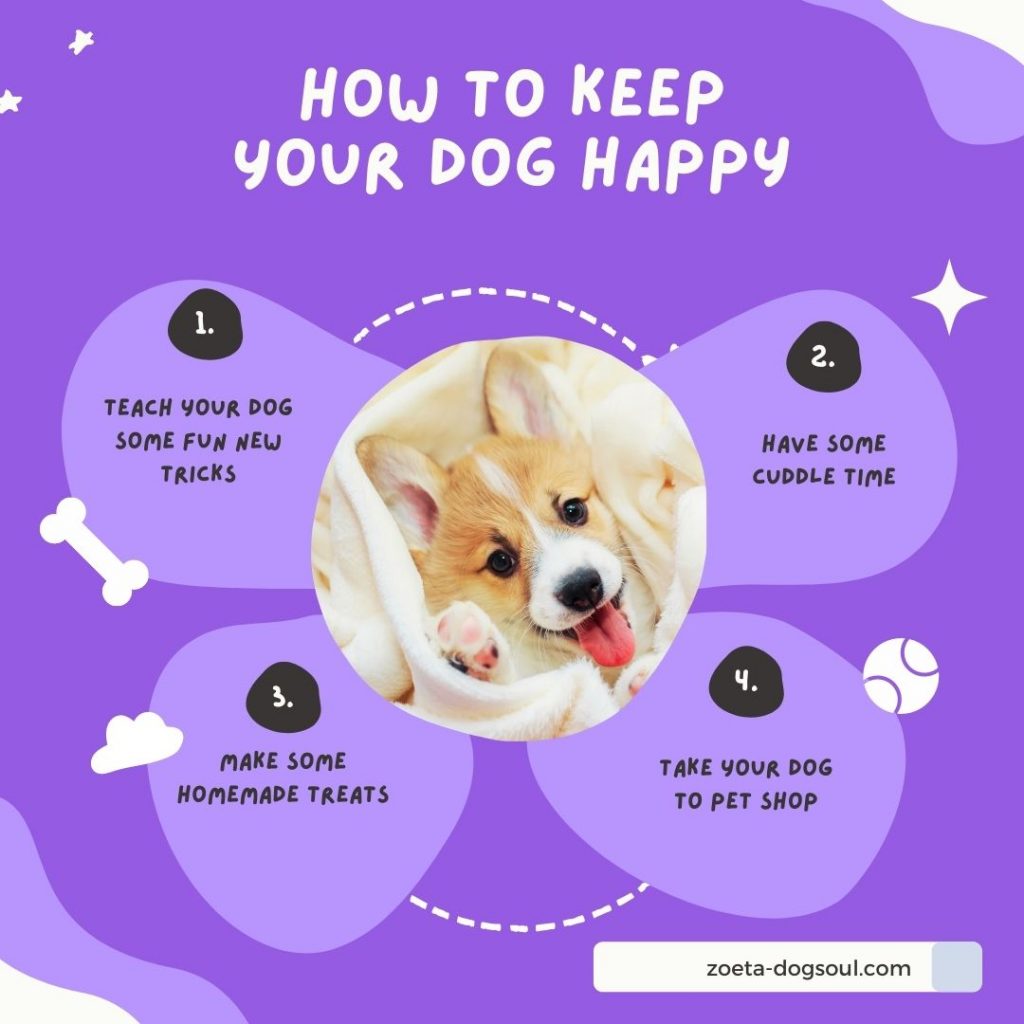
The Influence of Market Trends on Perception and Sales
While it’s true that some breeds are naturally more sociable and patient with children, it’s important to remember that each dog is an individual with its own unique personality and behavior. The market trends, however, tend to overlook this fact, leading to a generalized perception about certain breeds. This can result in high demand and increased sales for breeders specializing in these “family-friendly” breeds. However, this can also lead to a lack of understanding about the inherent needs and behaviors of these dogs, which can be problematic.
Moreover, this idealization and commercialization of the “family dog” can inadvertently contribute to irresponsible breeding practices. In the pursuit of capitalizing on these trends, some breeders might prioritize quantity over quality, potentially leading to health issues and temperament inconsistencies in the puppies.
The influence of market trends on our perceptions and the purchase of dogs underscores the need for potential dog owners to do thorough research before bringing a dog home. While breeds can give us a general idea of what to expect, they cannot guarantee specific behaviors or traits. Understanding this can help families make informed decisions and foster healthier relationships with their furry friends.
Unpacking the Expectations Placed on Family Dogs
When we talk about family dogs, a common narrative emerges; these are lovable creatures that often take on extraordinary roles within our households. They are seen as protectors, companions, and even surrogate caregivers to our children. But what do these expectations mean for the dogs themselves? Are they realistic, or might they be doing more harm than good?
Roles and Duties That Family Dogs Are Expected To Fulfill
Dogs, in many respects, are exceptional. Their ability to connect with us, understand our emotions, and respond to our needs is something that sets them apart from other pets. As a result, we often assign them roles that go beyond what might be considered their ‘natural’ duties. Some families expect their dogs to be vigilant guardians, always alert and ready to defend the home. Others may want a dog to provide emotional support, acting as a calming presence in times of stress. And let’s not forget the classic image of the dog as nanny, gently caring for children and ensuring their safety.
The Unrealistic Expectations We Place on Our Dogs
While it’s heartwarming to imagine our dogs fulfilling these roles, it’s important to recognize that these expectations can sometimes be unrealistic. Dogs are not naturally equipped to understand complex human emotions or to differentiate between a visitor and a potential threat. Even the idea of a dog taking care of a child is largely based on romanticized notions rather than fact. A dog is simply not capable of providing the same level of care and supervision as a human caregiver.
The Potential Harm Caused By These Expectations
These unrealistic expectations can potentially lead to harmful situations for our beloved pets. If a dog is constantly expected to be on guard, it may lead to chronic stress and anxiety. Similarly, if a dog is expected to provide emotional support at all times, it may not receive the care and attention it needs to thrive. The pressure to live up to these expectations can also lead to behavioural issues, such as aggression or fear-based reactions, which can further strain the relationship between the dog and its family.
In essence, while it’s natural to form deep emotional bonds with our pets, we must remember that dogs have their own needs, behaviors, and limitations. By understanding and respecting these, we can ensure a healthier and happier relationship with our four-legged friends. After all, a family dog should be a cherished member of the family, not a tool to fulfill our various needs and expectations.
The Realities of Canine Behaviour
As we journey through the history and expectations of family dogs, it’s important to ground ourselves in the realities of canine behavior. It’s easy to forget that dogs, despite their domestication, remain predators and social creatures at heart. Their inherent nature, deeply rooted in their evolution, can sometimes be at odds with the roles we humanly envision for them.
Inherent Nature: Predators and Social Creatures
Dogs descend from wolves, and thus carry a predatory instinct within them. This doesn’t mean they’re dangerous or aggressive by default, but rather, they have a natural drive to chase, catch, and play. This is evident in everyday behaviors, like a dog chasing after a ball or a squirrel. The playfulness of dogs, their energy and zest, are all part of their ancestral predatory instinct.
Furthermore, dogs are inherently social creatures. Like their wolf ancestors, they thrive in packs and have a strong desire for companionship – be it with other dogs or humans. This social element influences their behaviour significantly, shaping their interactions and responses within a family setting.
The Disconnect: Human Expectations vs Canine Reality
However, the natural instincts of dogs don’t always align with human expectations. Consider the role of a bodyguard, for instance. While dogs can be protective of their family, expecting them to guard your home like a security system could lead to unwanted aggressive behaviors. Similarly, expecting a dog to behave like a psychotherapist, providing emotional support whenever needed, might gloss over their own needs for emotional well-being.
A dog being expected to act as a nanny is another common yet unrealistic expectation. As much as dogs can learn to be gentle and patient with children, they are not equipped to handle the responsibility of childcare. Assigning such roles disregards the fact that dogs, like any other creature, have their own needs, instincts, and limitations.
The mismatch between human expectations and canine behavior could lead to disappointment or even conflict. Recognizing the inherent nature of dogs and adjusting our expectations accordingly can pave the way for a harmonious coexistence. Rather than forcing dogs into roles they aren’t naturally built for, understanding and empathizing with their natural impulses can foster a healthier and more fulfilling relationship.
The Intersection of Dog and Family Life
We often see dogs as mere pets, but their impact on our lives extends far beyond companionship. Having a dog in the family setting comes with a multitude of benefits, each adding a unique dimension to the typical family dynamic.
The Benefits of Having a Dog in a Family Setting
Dogs are known for their unwavering loyalty and unconditional love, which can significantly enhance the emotional climate of a household. Studies have shown that dogs can help decrease stress levels and even lower blood pressure, contributing to a healthier lifestyle for all family members. Furthermore, owning a dog often encourages regular exercise and outdoor activities, promoting an active lifestyle. A dog’s presence can also act as a social icebreaker, facilitating easier communication between family members and even with the wider community.
Socialization and Upbringing: The Canine Perspective
While we appreciate the benefits dogs bring into our lives, it’s crucial to understand their needs too. Socialization and upbringing play a significant role in a dog’s life. Dogs are inherently social animals, and they thrive in environments where they can interact with both humans and other dogs. Regular walks, play dates with other dogs, and training classes are excellent ways to ensure your dog gets the social interaction it craves.
Proper upbringing is equally important. Training should begin at a young age, focusing not only on obedience but also on cultivating positive behaviors. Constant reinforcement and reward-based training methods have proven to be effective in raising well-behaved dogs. Remember, patience and consistency are key in this process.
Accepting Natural Dog Behaviors
Lastly, it’s essential to mention the importance of accepting natural dog behaviors. Dogs, like humans, have their own personalities and instincts. They will bark, dig, chase, and explore. While some behaviors can be managed through training, others are deeply ingrained and should be accepted as part of what makes your dog unique. Instead of trying to mold them to fit an idealized image, it’s healthier to embrace these traits and work around them constructively.
In the end, the intersection of dog and family life is a two-way street requiring understanding, respect, and mutual adaptation. When these elements are present, a dog can indeed become more than a pet – they become a cherished member of the family.
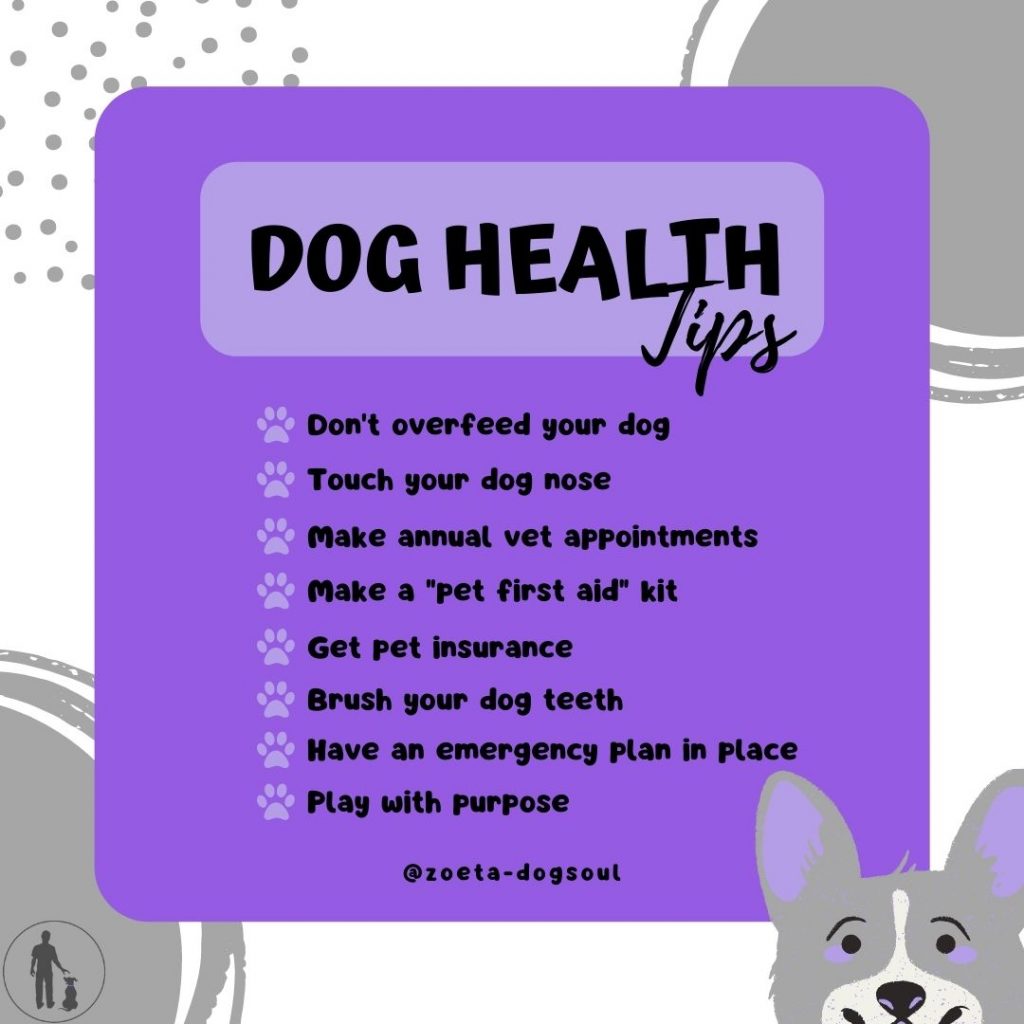
Choosing the Right Dog for Your Family
After exploring the various roles and expectations often placed upon our four-legged friends, we now approach a crucial step in any family’s journey to dog ownership: choosing the right dog. This decision requires thoughtful reflection on your family’s lifestyle, needs, and understanding of the inherent individuality of each dog. Let’s delve into how to navigate this process effectively.
Finding the Fit: Aligning with Your Lifestyle and Needs
The first aspect to consider when choosing your family dog is how well they will fit into your daily life. Every breed has its unique characteristics, energy levels, and care requirements. For instance, a Border Collie might not be the best fit for an apartment-dwelling family that enjoys quiet indoor activities, considering its need for extensive exercise and mental stimulation. On the other hand, a Basset Hound, known for being more laid-back, could be an excellent choice. The key is to identify a breed whose needs align with your lifestyle.
Moreover, it’s important to factor in the size of your living space, the time you can dedicate to your pet, and the age of your family members. Young children might do better with a patient and sturdy breed, while families with allergy sufferers should consider hypoallergenic breeds like the Poodle or Schnauzer.
Respecting the Individuality of Each Dog
While breed characteristics provide a general guideline, it’s essential to remember that each dog is an individual with its unique personality and quirks. Just as humans have diverse personalities, so do dogs. Some may be shy and reserved, while others are outgoing and vivacious. Some might love a good cuddle on the couch, while others prefer their independence. Embracing these differences is a fundamental part of responsible dog ownership.
When meeting potential furry family members, take the time to observe their behavior and interactions with you and your family. An energetic and playful pup might seem like a fun addition, but if your household is more relaxed and tranquil, this could create a mismatch. Similarly, a dog that seems aloof at first might just need some extra time to warm up and could be a perfect match for a patient, understanding owner.
Finally, remember that whatever dog you choose to bring home, they are not a super dog. They cannot be expected to fill the role of a nanny, psychotherapist, or bodyguard. Instead, they will be a loyal friend, a source of joy, and a cherished member of your family. Accepting and respecting them for who they are is the best gift you can give them.
Embracing the Reality of Family Dogs
Let’s revisit a key point made in our exploration of the mythical super dog: no single animal, no matter how intelligent or well-trained, can fully embody the roles of nanny, psychotherapist, and bodyguard. Despite the movies we watch or the novels we read, dogs do not possess an inherent ability to fulfill these complex human roles. It’s important to remember that it’s unrealistic and often unfair to burden any pet with such expectations.
Instead of projecting human roles onto our canine companions, we should strive to appreciate them for their authentic selves. Dogs have unique personalities, natural behaviours, and individual needs that make them the wonderful creatures they are. They bring joy, companionship, and unconditional love into our lives. In return, they ask for care, understanding, and respect for their inherent nature. So, let’s celebrate dogs as invaluable family members, not as substitutes for human roles.
Embracing the real essence of our dogs requires us to understand and respect their individuality. The responsibility of dog ownership goes far beyond providing food, shelter, and occasional walks. It involves understanding their natural behaviours, respecting their needs, and creating an environment where they can thrive. Whether it’s recognizing the importance of socialization, acknowledging their predatory instincts, or simply allowing them to be dogs, responsible ownership is about accepting dogs as they are.
As we conclude, let’s encourage every dog owner, and those considering this big step, to take on this responsibility with thoughtfulness and respect. Remember, acquiring a dog should never be an impulse decision, but a well-considered commitment that lasts for the lifetime of your furry friend. With understanding and respect, you can foster a deep bond with your dog that enriches both your lives and makes them a cherished part of your family.
